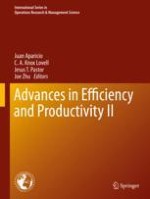2020 | OriginalPaper | Buchkapitel
A Two-Level Top-Down Decomposition of Aggregate Productivity Growth: The Role of Infrastructure
verfasst von : Luis Orea, Inmaculada Álvarez-Ayuso, Luis Servén
Erschienen in: Advances in Efficiency and Productivity II
Aktivieren Sie unsere intelligente Suche, um passende Fachinhalte oder Patente zu finden.
Wählen Sie Textabschnitte aus um mit Künstlicher Intelligenz passenden Patente zu finden. powered by
Markieren Sie Textabschnitte, um KI-gestützt weitere passende Inhalte zu finden. powered by
